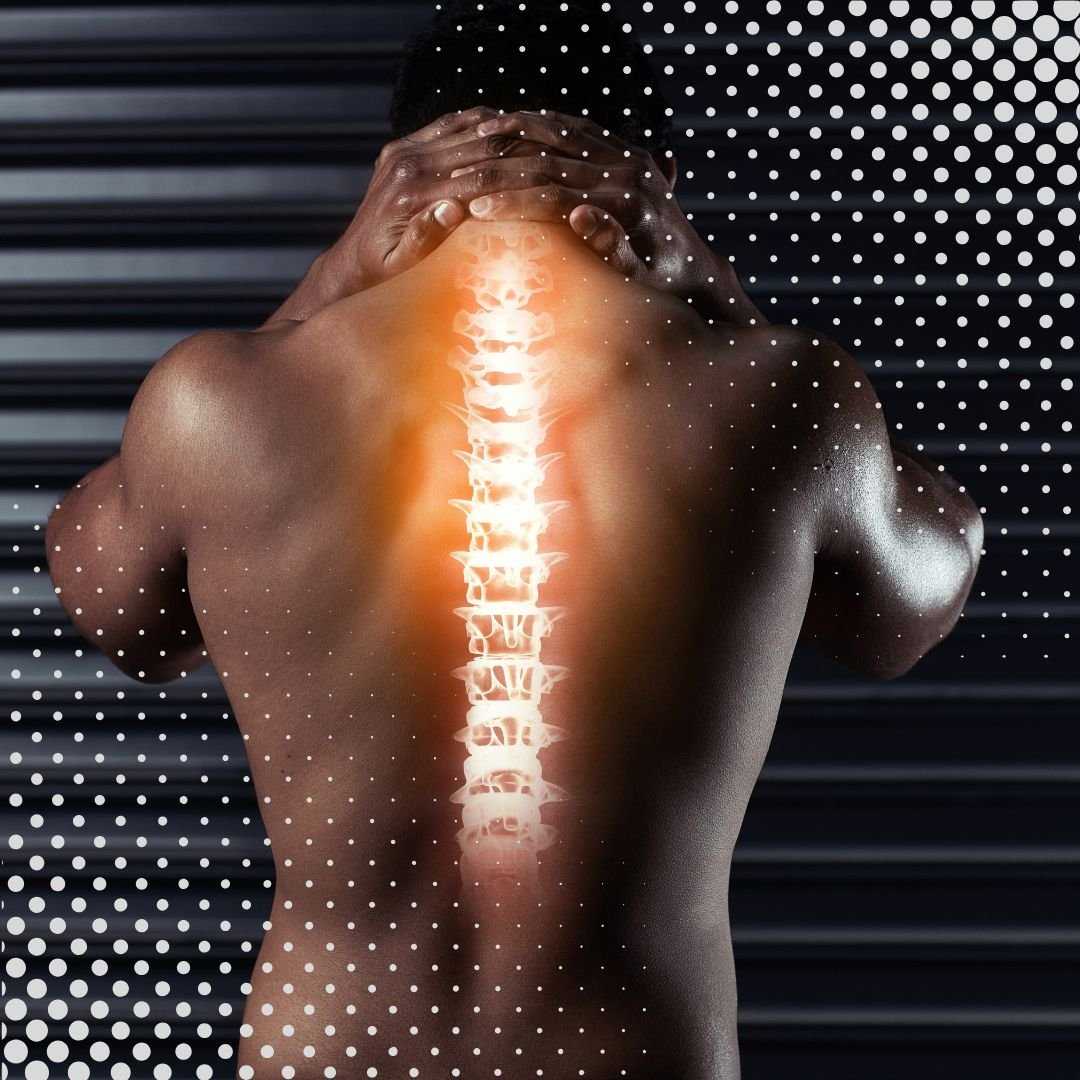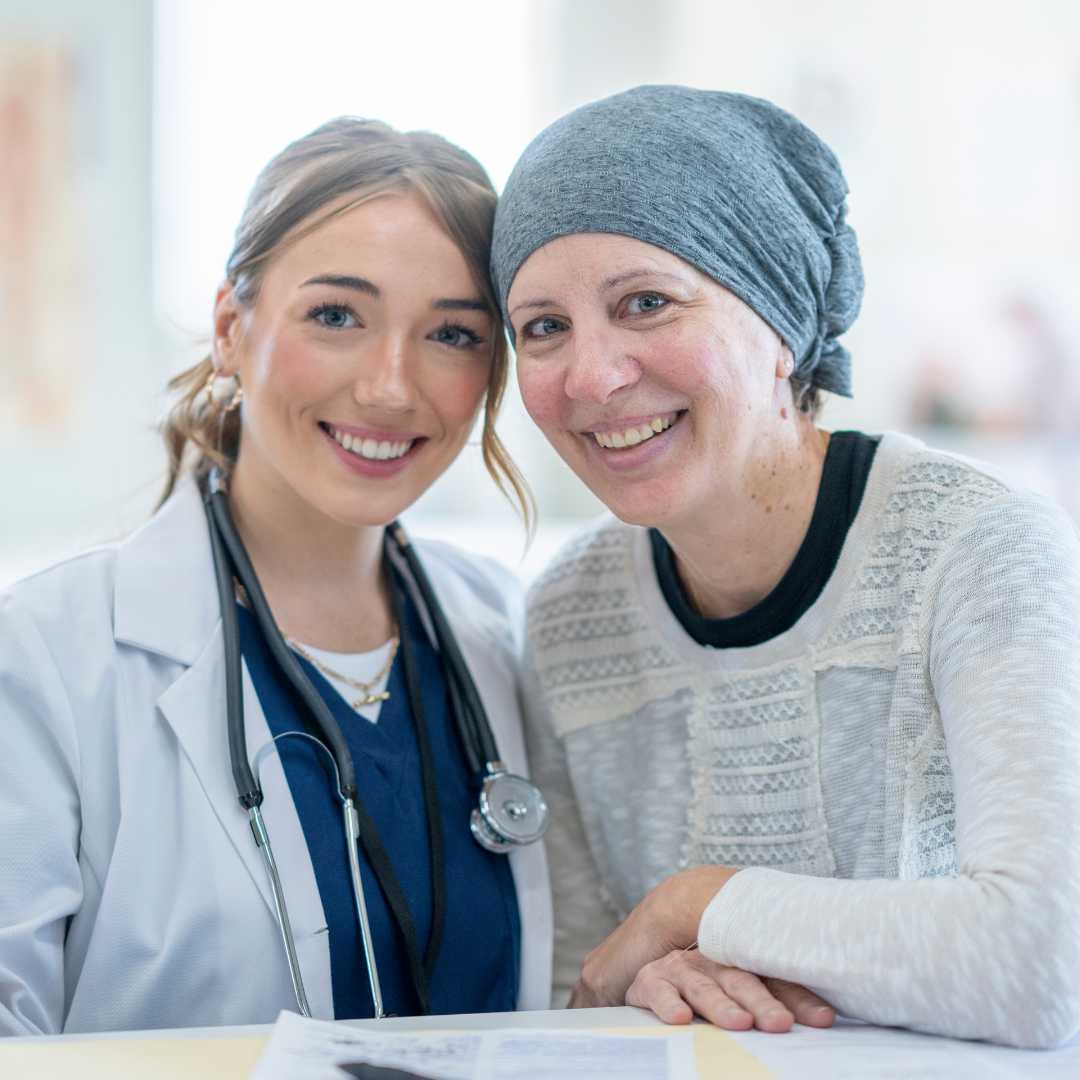
Unlock Your Youthful Potential: Explore Live Cell Therapy for Anti-Aging
Are you looking in the mirror and seeing a reflection that doesn't quite match how young you feel inside? Do you find yourself battling persistent fatigue, dull skin, aching joints, or a general decline in energy and vitality? These are common concerns for many as they age, yet the desire to maintain a vibrant, active life remains strong. The good news is, advancements in regenerative medicine offer promising solutions beyond conventional anti-aging creams and supplements.
Live Cell Therapy for anti-aging is a groundbreaking approach that harnesses the power of biological cells to rejuvenate your body from the inside out. This innovative treatment focuses on revitalizing your organs, strengthening your immune system, and enhancing cellular function to combat the visible and underlying processes of aging. It's not just about looking younger; it's about feeling younger, with renewed energy, improved mental clarity, and enhanced physical capabilities.
People often search for "how to reverse aging," "cellular rejuvenation treatments," "natural anti-aging solutions," or "boost immune system anti-aging." Live Cell Therapy aligns with these desires by aiming to restore cellular health, much like giving your body a profound internal reboot. It's designed for individuals experiencing a range of age-related symptoms, from decreased stamina and sagging skin to a weakened immune response and diminished cognitive function. If you're seeking a proactive and holistic strategy to reclaim your vitality and defy the conventional narrative of aging, live cell therapy could be a powerful option to explore.
Many patients are now looking beyond their borders for this specialized treatment, drawn by the allure of advanced medical facilities, expert practitioners, and often more accessible pricing in medical tourism destinations. This guide will delve into what Live Cell Therapy entails, who can benefit, what to expect, and why exploring this option abroad might be your next step toward lasting rejuvenation.
What are the common signs and symptoms of aging that live cell therapy addresses?
Aging is a complex process that manifests in numerous ways, affecting both our appearance and our internal health. Many individuals seeking anti-aging solutions report a combination of these symptoms:
- Skin Changes: Wrinkles, fine lines, loss of elasticity, dullness, age spots, and reduced wound healing.
- Energy Levels: Persistent fatigue, low stamina, decreased physical endurance, and a general lack of vitality.
- Joint and Muscle Health: Chronic joint pain, stiffness, reduced flexibility, muscle weakness, and slower recovery from physical activity.
- Cognitive Function: Memory lapses, difficulty concentrating, reduced mental clarity, and slower processing speed.
- Immune System: Increased susceptibility to infections, slower recovery from illness, and chronic inflammation.
- Hormonal Imbalance: Decreased libido, mood swings, sleep disturbances, and changes in body composition.
- Organ Function: Reduced efficiency in vital organs like the heart, liver, and kidneys, contributing to overall decline.
- Hair Loss: Thinning hair or increased hair shedding.
Live Cell Therapy aims to address these symptoms by promoting cellular regeneration and restoring optimal function, offering a more profound and systemic approach than surface-level treatments.
What causes the body to age, and how does live cell therapy aim to combat these causes?
The aging process isn't just about the passage of time; it's driven by a combination of biological mechanisms at the cellular level:
- Cellular Damage & Senescence: Over time, cells accumulate damage from free radicals (oxidative stress), toxins, and radiation. Some damaged cells become "senescent" (zombie cells) – they stop dividing but don't die, instead releasing inflammatory substances that harm neighboring healthy cells.
- Telomere Shortening: Telomeres are protective caps at the ends of our chromosomes. With each cell division, they shorten. Once they become too short, cells can no longer divide, contributing to tissue degeneration.
- Mitochondrial Dysfunction: Mitochondria are the powerhouses of our cells. As we age, their efficiency declines, leading to less energy production and increased oxidative stress.
- Inflammation (Inflammaging): Chronic, low-grade inflammation contributes to many age-related diseases and accelerates cellular aging.
- Hormonal Decline: Levels of vital hormones like growth hormone, estrogen, testosterone, and DHEA decrease with age, impacting mood, energy, muscle mass, and more.
Live Cell Therapy (LCT) seeks to intervene in these processes by introducing healthy, specialized cells—often derived from animal fetuses (e.g., sheep) or specific human sources depending on the therapy type and legal framework—into the body. These cells are thought to act as biological catalysts, stimulating the recipient's own cells to:
- Replace Damaged Cells: Promote the regeneration of new, healthy cells in various organs and tissues.
- Boost Cellular Repair: Enhance the body's natural repair mechanisms, helping to clear out damaged or senescent cells.
- Improve Metabolic Function: Reinvigorate cellular metabolism and mitochondrial activity, leading to increased energy production.
- Modulate Immune Response: Help rebalance the immune system, reducing chronic inflammation.
- Restore Hormonal Balance: Support endocrine glands in their natural hormone production.
The goal is a systemic revitalization, addressing the root causes of aging rather than just its symptoms.
What types of live cell therapy are available for anti-aging, and how do they work?
While the term "Live Cell Therapy" can be broad, for anti-aging purposes, it typically refers to therapies involving the introduction of biologically active cells or cell extracts designed to promote regeneration and revitalization. It's important to distinguish between different approaches:
- Fetal Live Cell Therapy (FCT): This traditional form of live cell therapy, pioneered decades ago, involves injecting fresh, live cells or purified cell extracts from specific fetal animal organs (most commonly sheep). The premise is that these young, undifferentiated cells have a high regenerative potential and can stimulate the recipient's corresponding organs to rejuvenate. For example, fetal liver cells for liver regeneration, or fetal adrenal cells for hormonal balance. The cells are prepared carefully to ensure compatibility and vitality.
- Organ-Specific Cell Extracts: Some clinics use highly purified, freeze-dried extracts from specific animal organs rather than whole live cells. These extracts contain growth factors, peptides, and other bioactive substances believed to stimulate cellular repair and function in the target organ.
- Stem Cell Therapy (related but distinct): While often conflated, traditional Live Cell Therapy (especially fetal live cell therapy) is distinct from stem cell therapy. Stem cell therapy typically uses unspecialized human cells (autologous from the patient, or allogeneic from a donor) that can differentiate into various cell types. However, some anti-aging clinics might use stem cells (e.g., mesenchymal stem cells) as part of a broader "live cell" or regenerative medicine protocol.
How they work: Regardless of the specific type, the underlying principle is that these biological materials, when introduced into the body, act as potent biological messengers. They are thought to:
- Stimulate Regeneration: Encourage the body's dormant stem cells and existing cells to divide, repair, and replace damaged tissue.
- Provide Growth Factors: Deliver essential growth factors and cytokines that promote cellular health and activity.
- Immunomodulation: Help to regulate the immune system, reducing inflammation and enhancing protective responses.
- Detoxification: Support the function of detoxifying organs.
The cells are typically administered via injection (intravenous, intramuscular, or subcutaneous), sometimes after a careful preparation process tailored to the patient's needs.
Am I a suitable candidate for live cell therapy for anti-aging?
Determining suitability for Live Cell Therapy is a critical step and requires a comprehensive medical evaluation by a qualified specialist. Generally, ideal candidates are individuals who:
- Are Experiencing Age-Related Decline: Those noticing significant symptoms of aging (as listed earlier) and seeking a proactive, systemic solution.
- Are in Generally Good Health: Candidates should not have acute illnesses, severe infections, or uncontrolled chronic conditions.
- Have Realistic Expectations: While LCT can offer significant improvements, it is not a "fountain of youth" and does not stop the aging process entirely, but rather aims to slow it down and reverse some of its effects.
- Are Committed to a Healthy Lifestyle: The benefits of LCT are often enhanced and sustained with a healthy diet, regular exercise, and stress management.
Common Contraindications (reasons you might not be suitable):
- Active Cancer or History of Certain Cancers: Some LCT protocols may not be suitable.
- Acute Infections or Fever: Treatment is usually postponed until the infection resolves.
- Severe Autoimmune Diseases: Depending on the type of therapy and the specific condition.
- Pregnancy and Breastfeeding: Generally contraindicated.
- Severe Organ Failure: Individuals with advanced kidney, liver, or heart failure may not be suitable.
- Certain Blood Disorders: Conditions affecting clotting or immune function may require careful consideration.
- Allergies: Particularly to animal proteins, if animal-derived cells are used.
A detailed medical history, physical examination, and blood tests are standard procedures to assess your overall health and suitability. Always have an open and honest discussion with the medical team to ensure the therapy is safe and appropriate for your unique situation.
What should I expect during recovery from live cell therapy, and what are the long-term expectations?
The recovery and long-term expectations for Live Cell Therapy are typically quite favorable, though individual results can vary:
Immediate Post-Procedure & Recovery:
- Minimal Downtime: Most live cell therapies are minimally invasive, often involving injections. Patients can typically return to normal daily activities within a day or two.
- Mild Side Effects: You might experience mild redness, swelling, or tenderness at the injection sites. Some individuals report a temporary feeling of fatigue or mild flu-like symptoms as their body adjusts and begins the healing process. These usually subside within a few days.
- Post-Treatment Care: Clinics often provide specific guidelines, which may include avoiding strenuous exercise, alcohol, and certain medications for a short period. Hydration and rest are usually recommended.
Timeline for Results & Long-Term Expectations:
- Initial Improvements (Weeks 1-4): Patients often report an initial boost in energy, improved sleep quality, and a general sense of well-being within a few weeks. Skin might start to look more radiant.
- Significant Benefits (Months 2-6): More profound and noticeable changes typically emerge over several months. This can include:
- Increased stamina and reduced fatigue.
- Improved skin texture, elasticity, and reduction of fine lines.
- Better joint flexibility and reduced pain.
- Enhanced mental clarity and focus.
- Strengthened immune response.
- Improved hormonal balance and libido.
- Duration of Effects: The rejuvenating effects can last anywhere from 1 to 3 years, or even longer, depending on the specific therapy, the individual's lifestyle, and their initial health status. Many clinics recommend periodic booster treatments to maintain optimal results.
- Lifestyle Impact: Adopting a healthy lifestyle – including a balanced diet, regular exercise, adequate sleep, and stress management – is crucial for maximizing and prolonging the benefits of live cell therapy. Think of it as investing in a high-performance car; proper maintenance makes it last longer.
Open communication with your medical team about your progress and any concerns is key to a successful outcome.
What are the potential risks and side effects of live cell therapy for anti-aging?
While Live Cell Therapy is generally considered safe when administered by experienced professionals in reputable clinics, like any medical procedure, it carries potential risks and side effects. Transparency about these is crucial for informed decision-making.
Common, Minor Side Effects (usually temporary):
- Flu-like Symptoms: Some patients may experience a temporary fever, chills, headache, or fatigue as the body's immune system reacts to the new cells. This is often seen as a sign that the body is responding to the treatment.
- Injection Site Reactions: Redness, swelling, bruising, or tenderness at the sites where the cells were injected.
- Mild Allergic Reactions: Though cells are often processed to reduce immunogenicity, a mild allergic reaction (e.g., skin rash) can occur in sensitive individuals, especially if animal-derived cells are used.
Potential, More Serious (but Rare) Risks:
- Infection: As with any injection, there's a minimal risk of infection if sterile protocols are not rigorously followed.
- Severe Allergic Reaction (Anaphylaxis): Extremely rare, but possible, especially if pre-screening for allergies is inadequate.
- Immune Rejection: Although fetal cells are considered less immunogenic, there's a theoretical risk of an immune reaction, where the body's immune system identifies the foreign cells and attempts to reject them. Reputable clinics use specific protocols to minimize this risk.
- Transmission of Diseases: A very low risk if the source cells (animal or human) are not meticulously screened and tested for pathogens. This is why choosing a highly regulated and reputable clinic is paramount.
- Unintended Cell Growth: While highly theoretical with specific live cell protocols for anti-aging, any cellular therapy carries a minuscule theoretical risk of uncontrolled cell proliferation, especially if non-differentiated cells are used improperly.
Minimizing Risks:
- Choose Accredited Clinics: Ensure the clinic adheres to international standards and regulations.
- Thorough Screening: Reputable clinics conduct extensive patient and cell source screening.
- Experienced Practitioners: The expertise of the medical team is crucial for safe administration and management of potential side effects.
Always discuss all potential risks with your medical provider and understand their protocols for safety and quality control.
How much does live cell therapy for anti-aging cost worldwide?
The cost of Live Cell Therapy for anti-aging can vary dramatically based on several factors, including the country, the specific clinic, the type and number of cells used, the extent of the treatment protocol, and whether it includes additional complementary therapies. Here’s a general overview and comparison:
Live Cell Therapy for Anti-Aging Cost Comparison Table (Estimated)
| Country | Estimated Cost Range (USD) | Key Factors Influencing Cost |
|---|---|---|
| Switzerland | $30,000 - $80,000+ | Pioneering clinics, highly regulated, luxurious facilities, comprehensive programs, often includes accommodation and follow-up. |
| Germany | $25,000 - $70,000+ | Strong medical reputation, advanced research, specialized clinics, high quality standards. |
| Mexico | $10,000 - $35,000+ | More affordable, growing medical tourism hub, modern facilities, often includes travel packages. |
| Ukraine/Eastern Europe | $8,000 - $25,000+ | Cost-effective options, some clinics with long-standing experience, but regulation can vary. |
| Other Asian Countries (e.g., Thailand) | $12,000 - $40,000+ | Competitive pricing, high-quality medical infrastructure in select centers, often combined with tourism. |
Additional Cost Considerations:
- Consultation and Diagnostics: Initial assessments, blood tests, and medical screenings are usually an additional cost.
- Number of Treatments: Some protocols involve multiple sessions over time, increasing the overall cost.
- Accommodation and Travel: These are significant factors for international patients.
- Post-Treatment Care: Follow-up appointments, medications, or supplements.
- Inclusions: Some premium packages might include airport transfers, luxury accommodation, and personalized concierge services.
It's crucial to get a detailed, itemized quote from any clinic you consider and understand exactly what is included in the price.
Why should I consider traveling abroad for anti-aging live cell therapy?
Medical tourism for anti-aging treatments, especially advanced therapies like Live Cell Therapy, has grown significantly. Here are compelling reasons why patients choose to look beyond their home country:
- Access to Pioneering Therapies & Expertise: Some countries have a longer history and more advanced research in Live Cell Therapy, offering techniques or specific cell types that might not be available or approved in your home country. Clinics often boast highly specialized doctors with decades of experience.
- Cost-Effectiveness: As seen in the cost comparison, the same high-quality treatment can be significantly more affordable in certain countries without compromising standards. This can make otherwise inaccessible treatments a viable option.
- Privacy and Discretion: For those who prefer to undergo significant personal rejuvenation away from their local community or public eye, traveling abroad offers a high degree of privacy.
- Reduced Waiting Times: In some healthcare systems, waiting lists for specialized treatments can be long. Abroad, you often have immediate access to appointments and procedures.
- Integrated Wellness and Recovery: Many clinics abroad offer holistic packages that combine treatment with luxury accommodation, nutritious meals, detoxification programs, and serene environments, enhancing the overall healing and rejuvenation experience.
- "Health Vacation" Opportunity: Combining medical treatment with a travel experience can reduce stress and promote psychological well-being, which is beneficial for recovery and overall health.
Ultimately, the decision to travel abroad is personal, but for many, the combination of advanced care, potential savings, and a unique patient experience makes it an attractive proposition.
Which countries are best known for offering high-quality live cell therapy for anti-aging?
Certain countries have developed strong reputations for providing advanced and reputable Live Cell Therapy, particularly for anti-aging. These destinations often combine medical expertise with robust regulatory frameworks or extensive historical experience:
- Switzerland: Often considered the birthplace of modern live cell therapy (specifically fetal cell therapy), Switzerland has a long-standing tradition of highly specialized and exclusive clinics. They are known for meticulous preparation, personalized treatment plans, and often a luxurious, discreet environment. The clinics are heavily regulated, ensuring high standards of safety and quality, though at a premium price point.
- Germany: Similar to Switzerland, Germany boasts a strong medical infrastructure, cutting-edge research, and specialized clinics offering various forms of regenerative and live cell therapies. German clinics are renowned for their scientific rigor, advanced technology, and highly qualified medical professionals.
- Mexico: In recent years, Mexico has emerged as a significant hub for medical tourism, including anti-aging live cell therapy. Many clinics offer advanced treatments at a more accessible price point compared to Europe, often maintaining international standards and attracting patients from North America.
- Ukraine and Eastern Europe: Countries like Ukraine have also gained recognition for certain types of live cell and stem cell therapies. They often provide competitive pricing and have clinics with decades of experience in cellular medicine. Patients should, however, perform extra due diligence regarding clinic accreditation and regulatory oversight in these regions.
- Other Emerging Destinations: Countries like Thailand, South Korea, and some in the Caribbean are also developing their medical tourism sectors and offering anti-aging cellular therapies, combining quality care with attractive travel opportunities.
When choosing a country and clinic, it's essential to research their specific protocols, accreditations, and patient testimonials to ensure they meet your expectations for quality and safety.
How can I ensure safety and quality when choosing a clinic for live cell therapy abroad?
Ensuring safety and quality is paramount when considering any medical procedure abroad, especially for innovative therapies like Live Cell Therapy. Here's a checklist to guide your decision-making:
- Check for International Accreditations: Look for clinics accredited by recognized international bodies such as JCI (Joint Commission International), ISO certifications, or country-specific medical board approvals. These indicate adherence to global standards of patient care and safety.
- Research Doctor Qualifications and Experience: Verify the credentials of the lead physicians and their team. Look for specialized training in regenerative medicine, extensive experience with live cell therapy, and affiliations with reputable medical organizations. Are they board-certified in their respective fields?
- Understand the Cell Source and Processing: Inquire about where the cells come from (e.g., specific animal breeds, human donors, or the patient's own body for stem cells) and the rigorous screening processes used to ensure they are healthy, pathogen-free, and viable. Ask about laboratory standards (e.g., GMP - Good Manufacturing Practice).
- Review Clinic History and Patient Testimonials: A clinic with a long-standing history in the field and positive, verifiable patient testimonials (ideally with before-and-after accounts or direct contact options) can be a good indicator. Be wary of clinics with only generic or suspiciously perfect reviews.
- Seek Transparent Communication and Comprehensive Consultation: A reputable clinic will provide detailed information about the procedure, potential risks, expected outcomes, and an itemized cost breakdown. They should offer a thorough pre-treatment consultation (often via video call) to assess your suitability and answer all your questions.
- Avoid Unrealistic Promises: Be cautious of clinics that promise miracle cures, guarantee specific results, or downplay potential risks. Live Cell Therapy is a regenerative treatment, not a magic bullet.
- Post-Treatment Support: Inquire about the follow-up care provided, including how they monitor your progress and handle any post-treatment concerns once you return home.
- Use a Reputable Medical Tourism Facilitator: Companies like PlacidWay specialize in connecting patients with vetted international clinics, helping you navigate the complexities of medical travel and providing an added layer of assurance.
Your health is your most valuable asset. Take the time to do your homework and choose a clinic that instills confidence through its transparency, expertise, and commitment to patient safety and quality.
Take the Next Step with PlacidWay
Ready to explore treatment options abroad? Discover top clinics, compare prices, and get a free quote tailored to your needs with PlacidWay.
Anti-aging | A world-renowned Antiaging facility





.png)
.png)



Share this listing